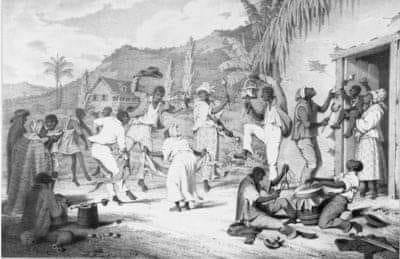|
Author & Researcher :Angelo Bissessarsingh
Written December 14, 2014 Back in times Christmas has become commercialized to the point where it has lost some of its special savour. The rampant consumerism that now begins as early as September in some stores, has robbed the season of its traditional values and in the process, has deprived us of that essence which once made Yuletide important to our ancestors. Christmas was of course introduced with the coming of the Spaniards to the island in their first permanent settlement of San Jose de Oruna (St Joseph), in 1592. There is no documentary evidence yet known about how these early colonizers celebrated the season, but being of an almost unanimously Roman Catholic persuasion, it can be assumed that there would have been mass at the church. First Peoples became evangelised through the machinations of the colonists themselves and later, through the influence of Capuchin monks who began arriving to establish missions in the island in 1687. Through a process of supplanting indigenous beliefs with Christianity and doubtless with the enticement of trinkets as gifts, there would have been some observance of Christmas at the missions. The influx of French planters and their enslaved workers after the Cedula of Population in 1783 brought a more stabilizing influence to the society. Like the Spaniards, the French were almost all Roman Catholic and attended midnight mass at the wooden chapel which served the little muddy town that was Port-of-Spain. With the growing affluence of the planters, especially after the conquest of the island by the British in 1797, Christmas balls became a great tradition with sumptuous meals being served on large tables. Both imported cured meats such as hams were served with an abundance of local fare like wild game, turtle and fish. The enslaved who were fortunate enough to be on estates held by more humane masters also had a share in the festivities. This of course was no elaborate matter but to poor beings trapped in the oppressive circumstances as the slaves were, a little was quite magnanimous in their eyes. Some who were permitted to keep provision grounds could raise crops or chickens for sale and thus have some cash for a few extra innocent luxuries. If the master of the plantation wished, he would distribute some extra food and pieces of cloth. One invaluable account was written on La Reconnaissance Estate (Lopinot Valley) by Webster Gillman who bought the cocoa plantation after the death of its founder, Comte de Lopinot in 1819.Gillman recorded: "We are all here carousing at La Reconnaissance. My family are preparing my dinner, and I am keeping order amongst 80 negroes who are all dancing, old and young, big and little, around me as hard as theycan put feet to the ground. I spent last Christmas here and finding the negroes converted were most happy and contented. I determined to make them so this year and I have succeeded. Early this morning, the 25th,we were awoke by salutes of small arms and as soon as the day broke, all the children were brought to the house to say their catechisms and to sing psalms,which to me was a very pleasing sight; this plan I adopted since I purchased the estate as I conceived that knowledge and existence of a superior being above would do no harm for them to know, and I have seen the happiest effects resulting from it. At nine o’clock while at breakfast, the whole of the negroes came dressed in the gayest clothes to wish us a Merry Christmas, and a piece of beef and an allowance of flour and raisins with a proportion of rum for the men and wine for the women and children. Then began dancing and the whole house is made free to them for three hours and they are enjoying themselves in the hall etc. “I have been three hours engaged in fitting the whole of the men with two suits of clothes each viz. a hat, a woolen cap, woolen shirt, a linen shirt, blue cloth jacket lined with flannel, blue trousers, and a pair of duck trousers; the manager’s wife supplying the women and children with hats, handkerchiefs, two shirts, blue wrapper and blue petticoat,with a linen gown, the boys supplied according to their ages.” Far from being a kindly indulgence, these clothes were the yearly allowance for the enslaved workers and would have to last until next season, but in the Christmas spirit, this pittance was like the riches of the world. Photo description :Dancing at La Reconnaissance Estate in the Lopinot Valley by Richard Brigens ( 1836
0 Comments
Leave a Reply. |
T&T news blogThe intent of this blog is to bring some news from home and other fun items. If you enjoy what you read, please leave us a comment.. Archives
May 2025
Categories
All
|


 RSS Feed
RSS Feed